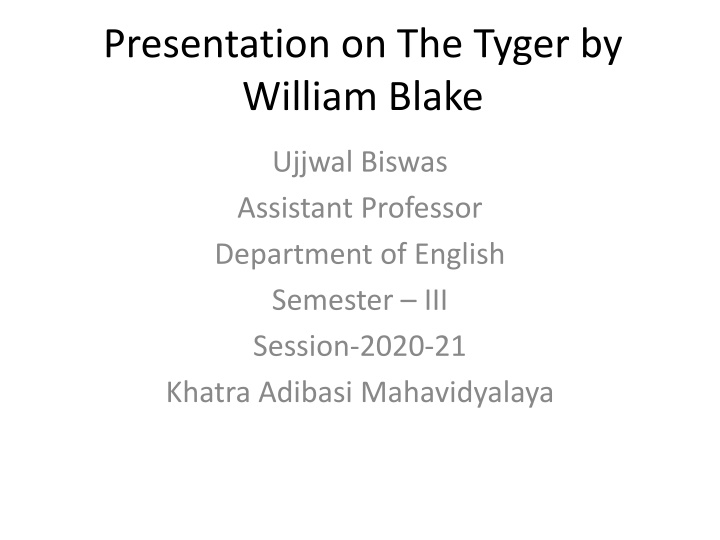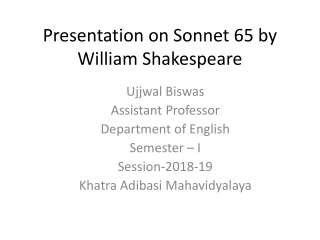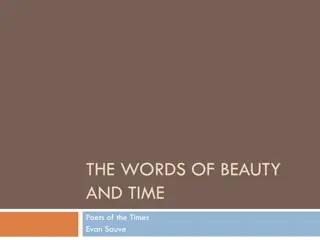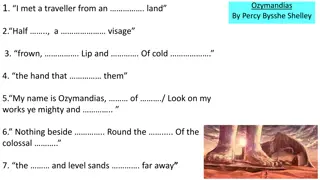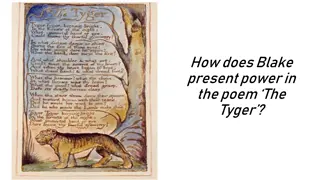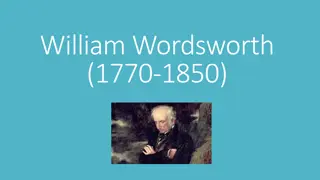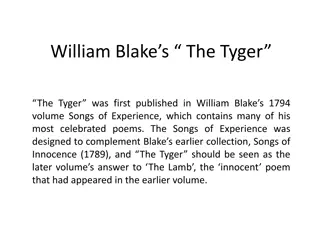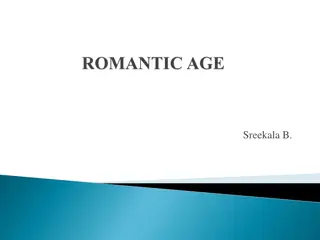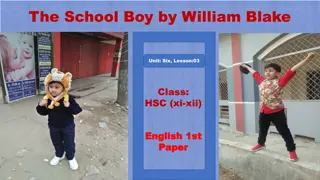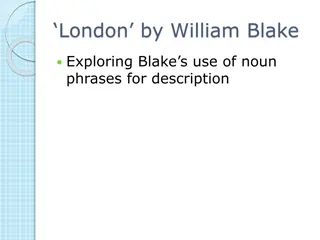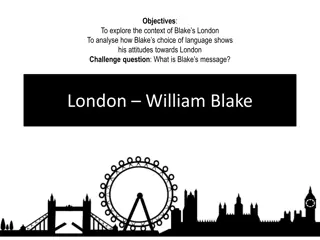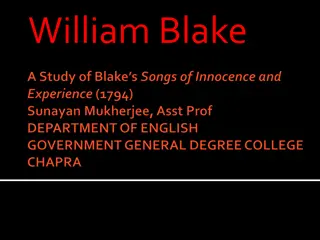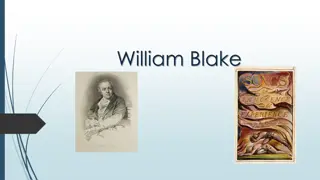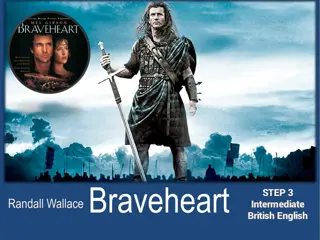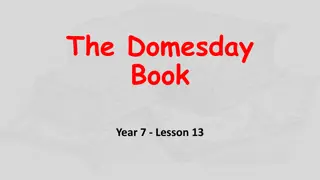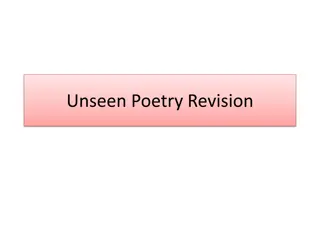Exploring "The Tyger" by William Blake: An Insight into the Poet's Vision
William Blake, a visionary poet and artist, crafted "The Tyger" as a thought-provoking piece questioning the nature of creation and the duality of existence. Through rhetorical questions and literary devices, Blake delves into the mystery of the fierce beast and reflects on themes of divine power and the complexities of life.
Download Presentation

Please find below an Image/Link to download the presentation.
The content on the website is provided AS IS for your information and personal use only. It may not be sold, licensed, or shared on other websites without obtaining consent from the author.If you encounter any issues during the download, it is possible that the publisher has removed the file from their server.
You are allowed to download the files provided on this website for personal or commercial use, subject to the condition that they are used lawfully. All files are the property of their respective owners.
The content on the website is provided AS IS for your information and personal use only. It may not be sold, licensed, or shared on other websites without obtaining consent from the author.
E N D
Presentation Transcript
Presentation on The Tyger by William Blake Ujjwal Biswas Assistant Professor Department of English Semester III Session-2020-21 Khatra Adibasi Mahavidyalaya
Life of Visionary Blake William Blake (28 November 1757 12 August 1827) was an English printmaker, painter and poet. He was unrecognised during his lifetime. Blake is now considered a stalwart in the history of the poetry and visual arts of the Romantic Age. He could see the arts in all their forms as offering insights into the metaphysical world and his broader aims were mostly theological and philosophical.
Works of Blake Songs of Innocence (1789) and Songs of Experience (1794) Visions of the Daughters of Albion (1793 The Book of Thel* (written 1788 1790, edited 1789 1793) The Marriage of Heaven and Hell (written 1790 1793) The Gates of Paradise (written 1793, edited 1818) Visions of the Daughters of Albion (edited 1793) There is No Natural Religion(written 1788, possible edited 1794 1795) The First Book of Urizen (edited 1794 1818) All Religions are One (written 1788, possible edited 1795) The Book of Los (edited 1795) Milton (written 1804 1810) Jerusalem: The Emanation of the Giant Albion((written 1804 1820 additions even later, edited 1820 1827 and 1832)
The Tyger Tyger Tyger, burning bright, In the forests of the night; What immortal hand or eye, Could frame thy fearful symmetry? Tyger Tyger burning bright, In the forests of the night: What immortal hand or eye, Dare frame thy fearful symmetry? In what distant deeps or skies. Burnt the fire of thine eyes? On what wings dare he aspire? What the hand, dare seize the fire? When the stars threw down their spears And water'd heaven with their tears: Did he smile his work to see? Did he who made the Lamb make thee? And what shoulder, & what art, Could twist the sinews of thy heart? And when thy heart began to beat, What dread hand? & what dread feet? Tyger Tyger burning bright, In the forests of the night: What immortal hand or eye, Dare frame thy fearful symmetry? x
Significant Issues Framed as a series of rhetorical questions Speaker wonders about the creator who is responsible for such ferocious animal like tyger Question on benevolent nature of God Blake makes use of several literary devices in The Tyger. These include but are not limited to alliteration, enjambment, and allusion.
